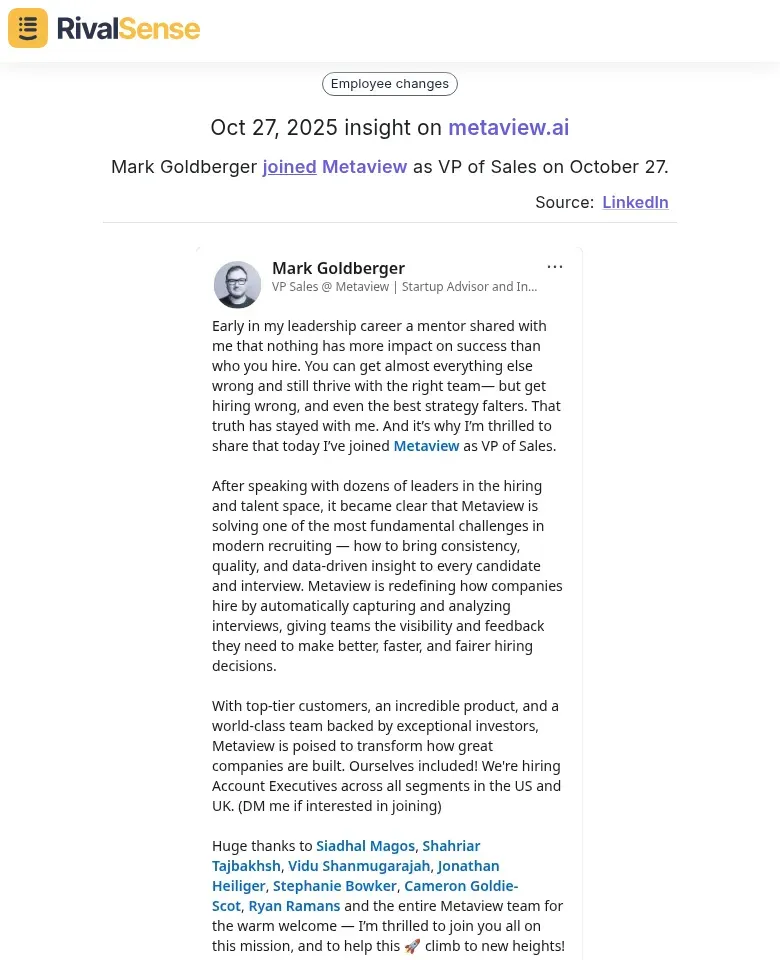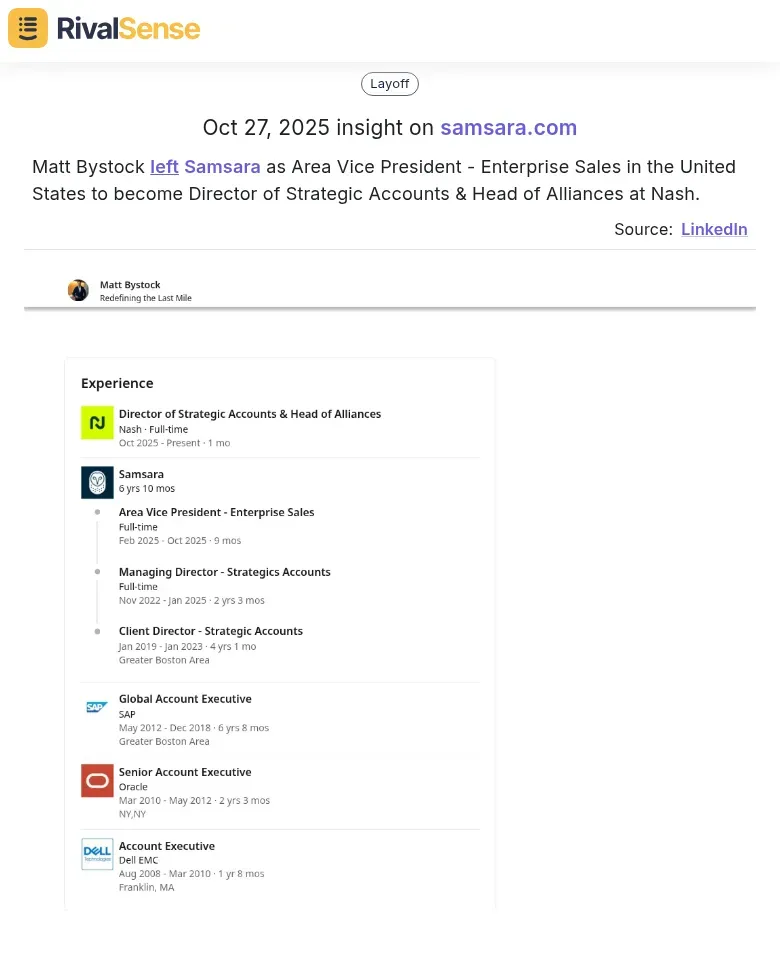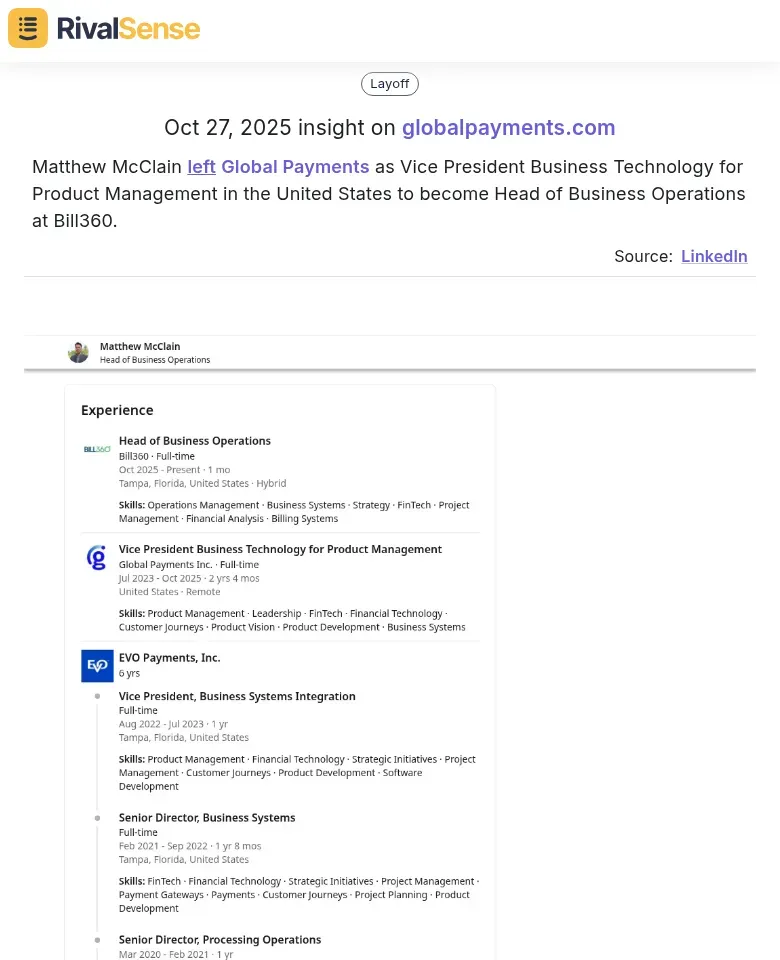Data-Driven Competitor Insights: Hiring and Layoff Trends
In today's volatile market, tracking competitor hiring and layoff trends provides critical intelligence for strategic decision-making. Data-driven insights reveal expansion plans, market confidence, and operational shifts before they become public knowledge. For instance, a competitor's surge in engineering hires might signal new product development, while layoffs could indicate cost-cutting or strategic pivots.
Key metrics to monitor include:
| Metric | Description |
|---|---|
| Job Posting Volume by Department | Tracks hiring intensity in areas like engineering, sales, or marketing. |
| Geographic Expansion Patterns | Identifies new markets or regions competitors are targeting. |
| Leadership Changes | Monitors executive hires and departures for strategic shifts. |
| Glassdoor Sentiment Analysis | Gauges employee morale and company culture insights. |
Practical steps to get started: set up alerts for competitor job boards, analyze LinkedIn company pages weekly, and track SEC filings for public companies. Use tools like RivalSense to automate data collection and identify patterns across multiple competitors simultaneously.
This intelligence helps you anticipate market moves, adjust your hiring strategy proactively, and identify talent opportunities during competitor layoffs. Here's a simple checklist to follow:
- ✅ Monitor top 5 competitors monthly
- ✅ Track department-specific trends
- ✅ Correlate hiring data with recent announcements or funding rounds
Analyzing Hiring Trends for Strategic Advantage
Hiring trends reveal competitor strategy shifts before they're public. Track these patterns to anticipate market moves and refine your own talent strategy. By analyzing role types and locations, you can decode where competitors are investing and why.
For example, RivalSense recently tracked that Mark Goldberger joined Metaview as VP of Sales on October 27. This type of insight is valuable because it signals a potential focus on scaling sales efforts or entering new markets, allowing you to adjust your own expansion plans proactively.

Identify Expansion: Monitor hires in unfamiliar locations or roles. A competitor hiring multiple sales reps in a new region signals market entry. Example: If a SaaS company suddenly hires German-speaking customer success managers, expect European expansion.
Assess Investment Priorities: Analyze role concentration. Heavy investment in AI/ML engineers indicates tech innovation focus, while sales hires suggest aggressive growth. Use tools like LinkedIn to track role types and departments.
Refine Your Strategy: Learn from competitor talent acquisition. If rivals consistently hire for customer success, prioritize retention in your hiring. Create a checklist:
- ✅ Track key competitors' job postings weekly
- ✅ Categorize roles by function (e.g., sales, engineering)
- ✅ Note geographic patterns
- ✅ Adjust your hiring to counter or mirror successful moves
Practical tip: Set up alerts for competitor job changes on platforms like LinkedIn to stay ahead. This data-driven approach turns hiring insights into competitive advantage.
Interpreting Layoffs and Employee Departures
Layoffs signal strategic pivots—when a competitor cuts R&D roles, they may be abandoning innovation for short-term survival. Track department-specific reductions to detect business focus shifts. Key employee departures can reveal instability or new opportunities in the market.
For instance, RivalSense captured that Matt Bystock left Samsara as Area Vice President - Enterprise Sales in the United States to become Director of Strategic Accounts & Head of Alliances at Nash. This insight is valuable because it highlights potential restructuring or alliance-building strategies, helping you identify weaknesses or partnership opportunities.

High turnover rates expose market vulnerabilities—if a rival's sales team churns rapidly, their customer relationships weaken, creating acquisition opportunities. Practical steps:
- ✅ Use tools like RivalSense to track layoff announcements and employee movement data
- ✅ Analyze turnover by department to identify weak spots
- ✅ Cross-reference departures with financial performance to anticipate competitive gaps
This data helps you pivot faster and capitalize on competitor weaknesses.
Case Studies: Insights from Real-World Examples
Case studies provide concrete examples of how hiring and departure trends translate into actionable intelligence. By examining real-world moves, you can better predict competitor behavior and refine your own strategies.
For example, RivalSense reported that Matthew McClain left Global Payments as Vice President Business Technology for Product Management in the United States to become Head of Business Operations at Bill360. This type of insight is valuable because it reveals talent shifts between industries, indicating emerging opportunities or strategic pivots you can leverage.

Analyze role transitions: a shift from enterprise sales to strategic accounts often indicates alliance-building or diversification. For example, a company moving key staff to strategic roles may be forming partnerships to enter adjacent markets.
Industry moves reveal trends: an executive jumping from payments to business operations software hints at emerging opportunities. Monitor these patterns to spot where competitors are betting.
Practical steps:
- ✅ Set up alerts for senior hires at rival companies
- ✅ Map role changes over time to detect strategic pivots
- ✅ Cross-reference industry transitions with market news to validate trends
- ✅ Use tools like RivalSense to automate tracking and get actionable insights
Implementing Competitor Tracking in Your Strategy
To implement competitor tracking effectively, start by leveraging tools like RivalSense, LinkedIn Talent Insights, and Glassdoor to monitor hiring patterns, job postings, and layoff announcements. This systematic approach allows you to gather actionable data without overwhelming manual effort, ensuring you stay informed on key developments.
Integrate these insights into your business planning by analyzing trends: increased hiring may signal growth or new product launches, while layoffs could indicate cost-cutting or market exits. Use this data for risk assessment—e.g., if a competitor scales back in your niche, it might reveal market saturation or opportunities.
Best practices include focusing on publicly available data to ensure ethical gathering, avoiding intrusive methods, and cross-referencing sources for accuracy. Create a checklist:
- ✅ Weekly reviews of competitor job boards
- ✅ Quarterly analysis of hiring vs. layoff ratios
- ✅ Scenario planning based on trends
Tips: Combine quantitative data with qualitative insights from news and industry reports, and involve your team in interpreting findings to align with strategic goals.
Conclusion: Leveraging Insights for Competitive Edge
Data-driven competitor insights transform hiring and layoff trends from reactive signals into proactive strategic assets. By systematically tracking these patterns, you can anticipate market shifts, identify emerging threats, and uncover growth opportunities before they become obvious. For example, a competitor's sudden hiring spree in AI might signal a new product launch, while layoffs could indicate financial stress or strategic pivots.
To leverage these insights effectively, implement a regular monitoring cadence—weekly reviews of key competitors' job postings and quarterly analysis of workforce changes. Create a simple checklist:
- ✅ Track hiring volume by department
- ✅ Note leadership changes
- ✅ Monitor skill-set shifts
- ✅ Correlate with financial performance
Use tools like RivalSense to automate data collection and receive alerts on significant changes. This approach enables you to adjust your talent strategy, refine market positioning, and make informed investment decisions. In today's dynamic market, staying ahead requires not just watching competitors but interpreting their moves to strengthen your own competitive edge.
Ready to put these strategies into action? Try RivalSense for free at https://rivalsense.co/ and get your first competitor report today to start gaining actionable insights for your business.
📚 Read more
👉 Real-World Competitor Analysis: Tracking ThoughtSpot's Product Evolution
👉 How to Track and Benchmark Competitor Customer Satisfaction: A Strategic Guide
👉 Optimize Smart Building Integration with Key Account Tracking Apps
👉 How Talent Movement Insights Transformed Competitive Strategy Against inDrive
👉 LinkedIn Competitive Analysis: Unlock Key Account Growth Insights
